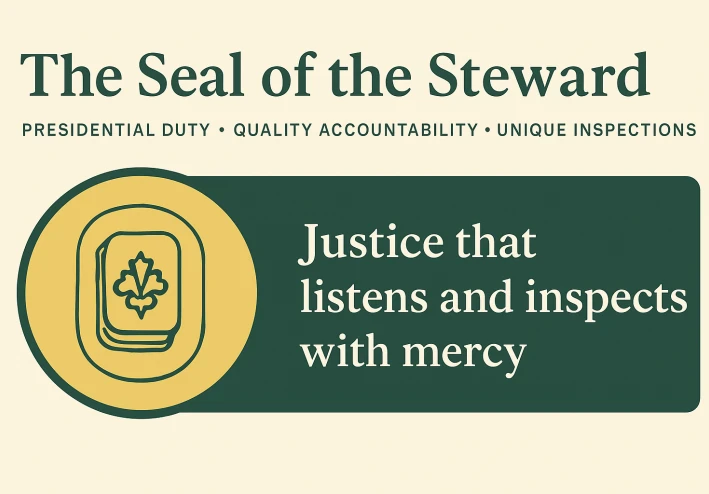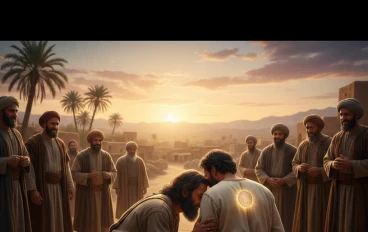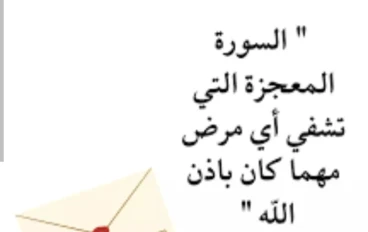
The Seal of the Steward
The Seal of the Steward
In the city of Sakinah, nestled between hills that held olive groves and springs, the people chose a president named Lutf ibn Kareem not for his speeches but for his pledge: to keep a seal that signified service, and to open his administration for continuous, living inspection. Lutf framed his stewardship with a principle drawn from the Qur'anic ethic of amanah (trust): that leadership is a trust that must be measured not only by accounts but by the quality of life those accounts create. He formed a new kind of oversight body — the Majlis al-Miqyas al-Jadid, the Council of New Measures — and tasked them with crafting exclusive inspections that examined the system’s soul rather than only its ledgers.
The Majlis introduced inspections unlike any formal check the city had known. Their essence was threefold: immersion, verification, and repair. Immersion required inspectors to live a short season within the community they audited; verification blended forensic record-checking with sensory tests like tasting the water and walking at midnight through the markets; repair meant teams carried small toolkits to fix immediate harms and mapped longer repairs with named deadlines. One of the council’s earliest and most revealing inspections targeted the school system: official attendance looked strong on paper, yet creative thinking had diminished. Inspectors spent a week as assistant teachers, listened to children recite, and compared curricula with field visits to workshops and farms. They found that many lessons were disconnected from the city’s livelihood. The remedy was inventive — a rotating curriculum that paired classroom theory with weekly apprenticeships in artisan shops and on farms, overseen by the same inspectors who had discovered the gap.
Another exclusive inspection focused on the distribution of public medicines. Records tracked deliveries, but villagers still reported half-healed patients. Inspectors traced supply routes, tested samples, and discovered counterfeit batches slipped in through a contracted vendor. The response was not limited to punishment. The Majlis redesigned contracts to include community validation points, a visible seal stamped on each crate by local healers, and a requirement that contractors carry out unannounced quality checks with inspectors. The vendor repaid the public and worked under supervision to rebuild trust, while the city instituted a public calendar where every inspection and its results were posted near the mosques and markets.
Lutf insisted that inspections be transparent yet humane. Each report produced by the Majlis had two parts: a public, plain-language summary posted for all citizens and a confidential improvement plan given to the office concerned. This dual-document habit discouraged gossip and enabled repair. When a road-building contract failed and potholes appeared like scars, the public summary explained the failure and the repair plan detailed the steps and persons responsible. Citizens learned to read these summaries at fountains and cafes; the habit turned inspection into civic conversation rather than rumor. Inspectors carried no badges of superiority; they carried clay tablets stamped with the city’s seal, and on market days they sat among citizens to hear concerns and record them in real time.
The president himself was not above inspection. Lutf inaugurated the Mīqās al-Khalīfah, the President’s Measure, where a rotating panel of citizens — chosen by lot from across neighborhoods — reviewed his decisions twice yearly. He accompanied these panels on field visits, welcomed their criticisms, and publicly signed their summaries. This practice made accountability visible from top to bottom: when a municipal reservoir was found poorly maintained, the president joined the repair brigades, sleeves rolled and hands muddy, and the photograph of him lifting stones beside laborers became a lasting lesson that leadership travels the same roads as its people.
Years passed and Sakinah’s governance matured into a culture of accountable quality: artisans stamped goods with inspection marks, teachers taught record-keeping as part of civic education, and small signs posted in shops declared the last inspection date. Lutf left office with a lighter seal but a heavier heart full of the people’s stories. The legacy that endured was not a single law but a practice — that inspection, when imaginative and compassionate, is the architecture of trust. The moral lived plainly: presidential stewardship grounded in living, exclusive inspections turns authority into service and ensures that quality is not only measured but restored.




































